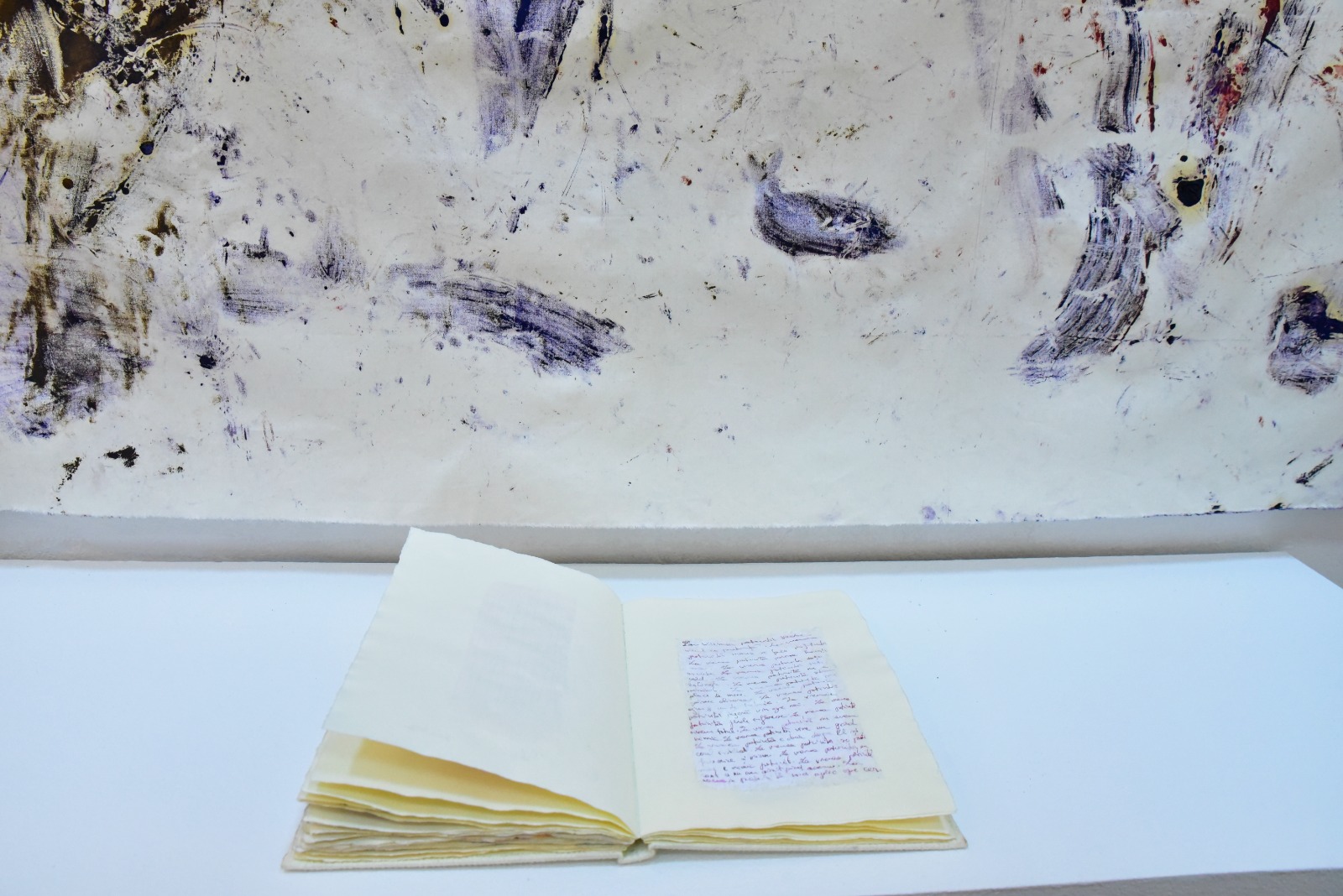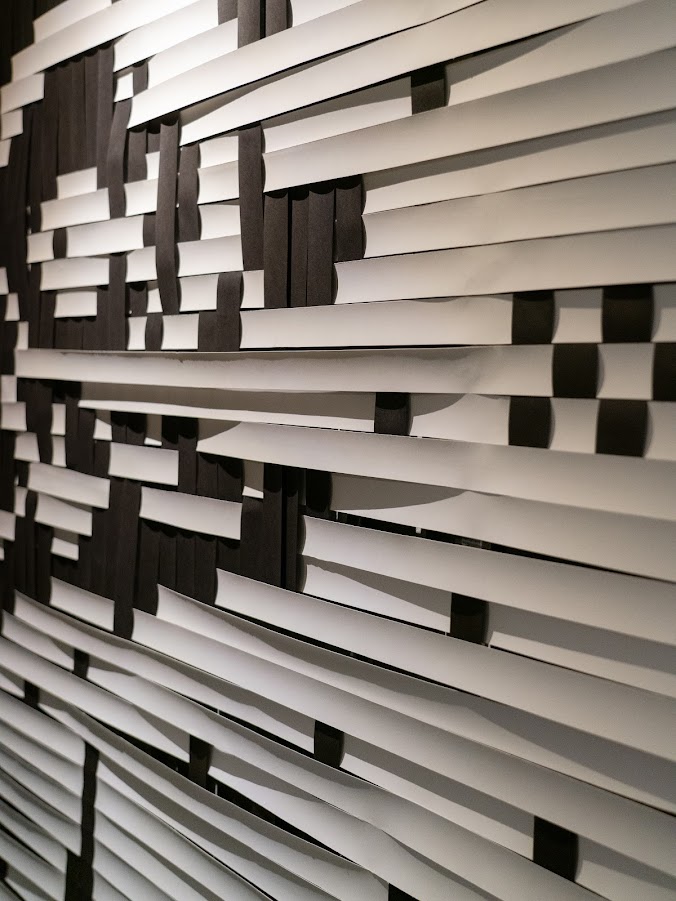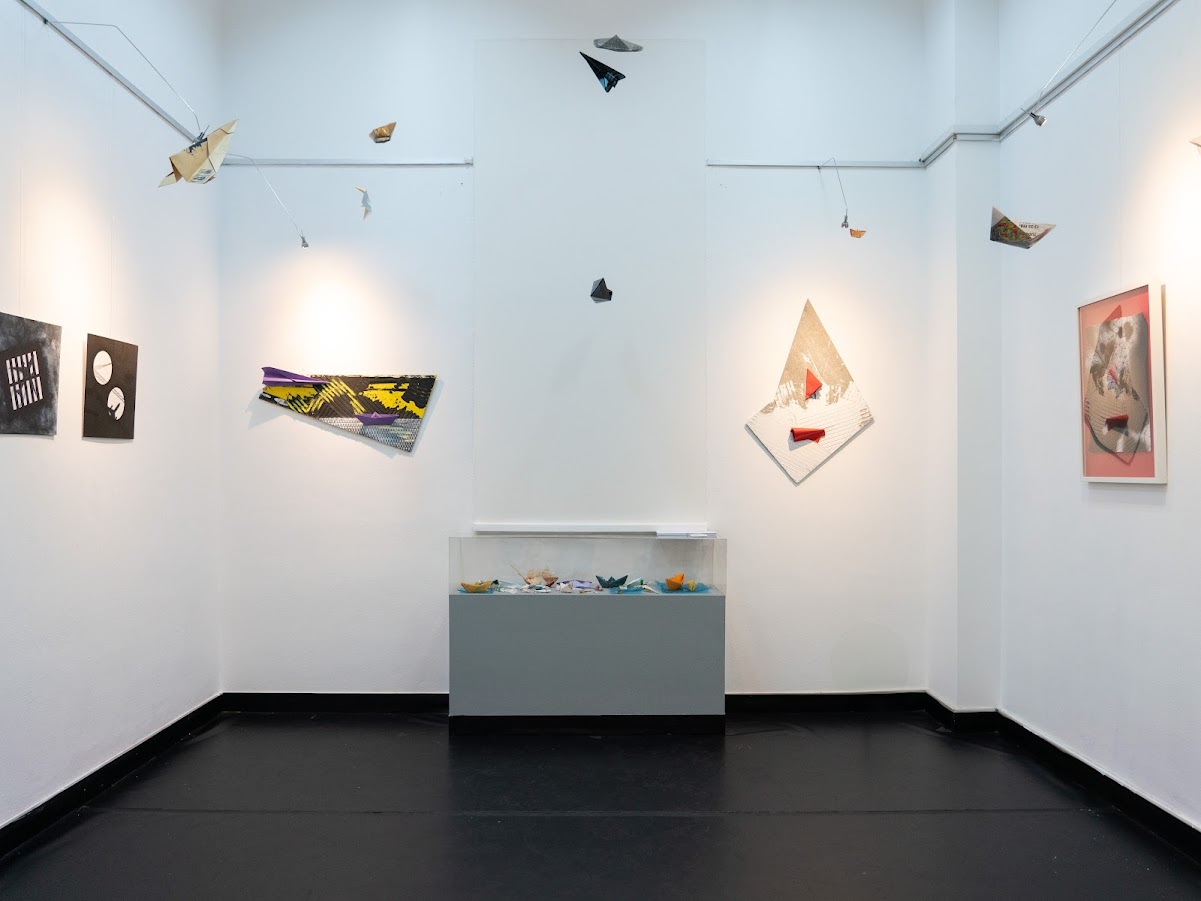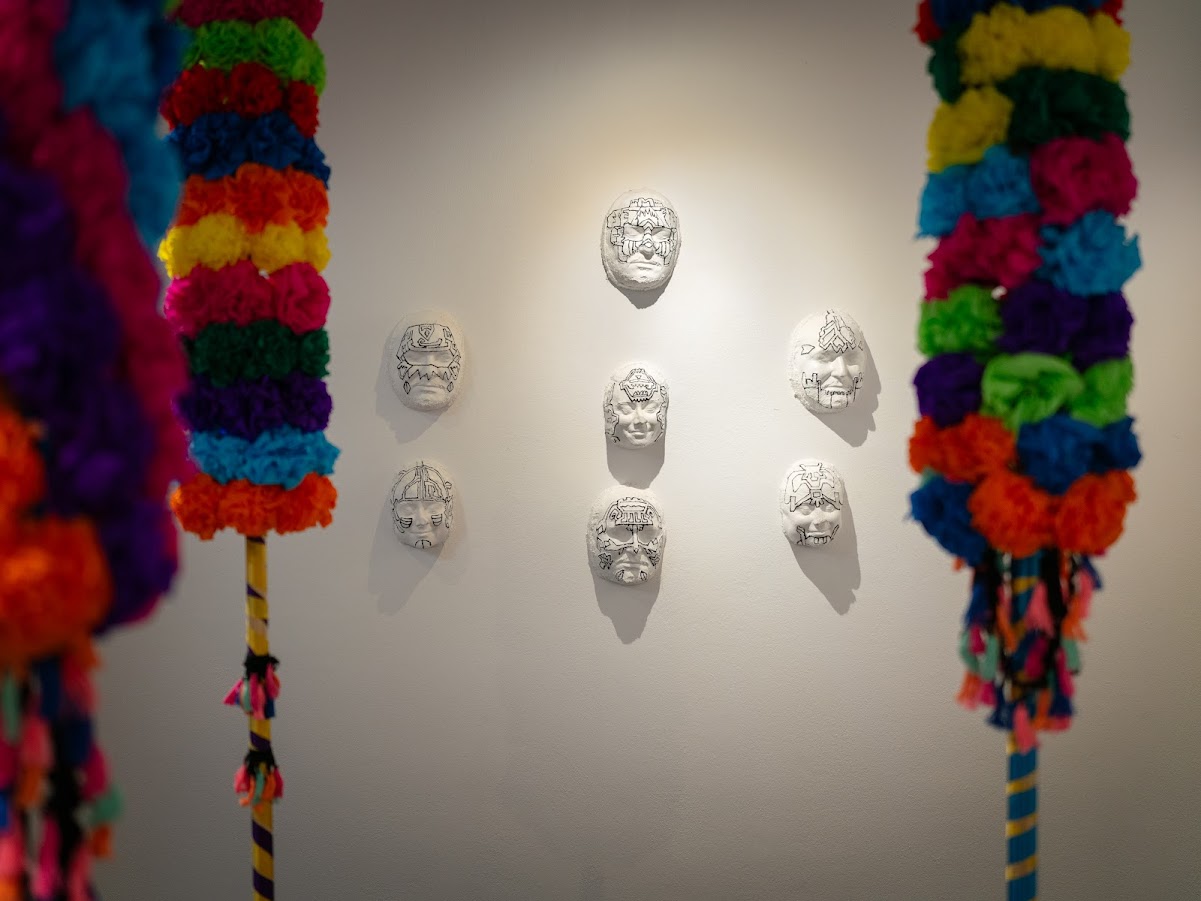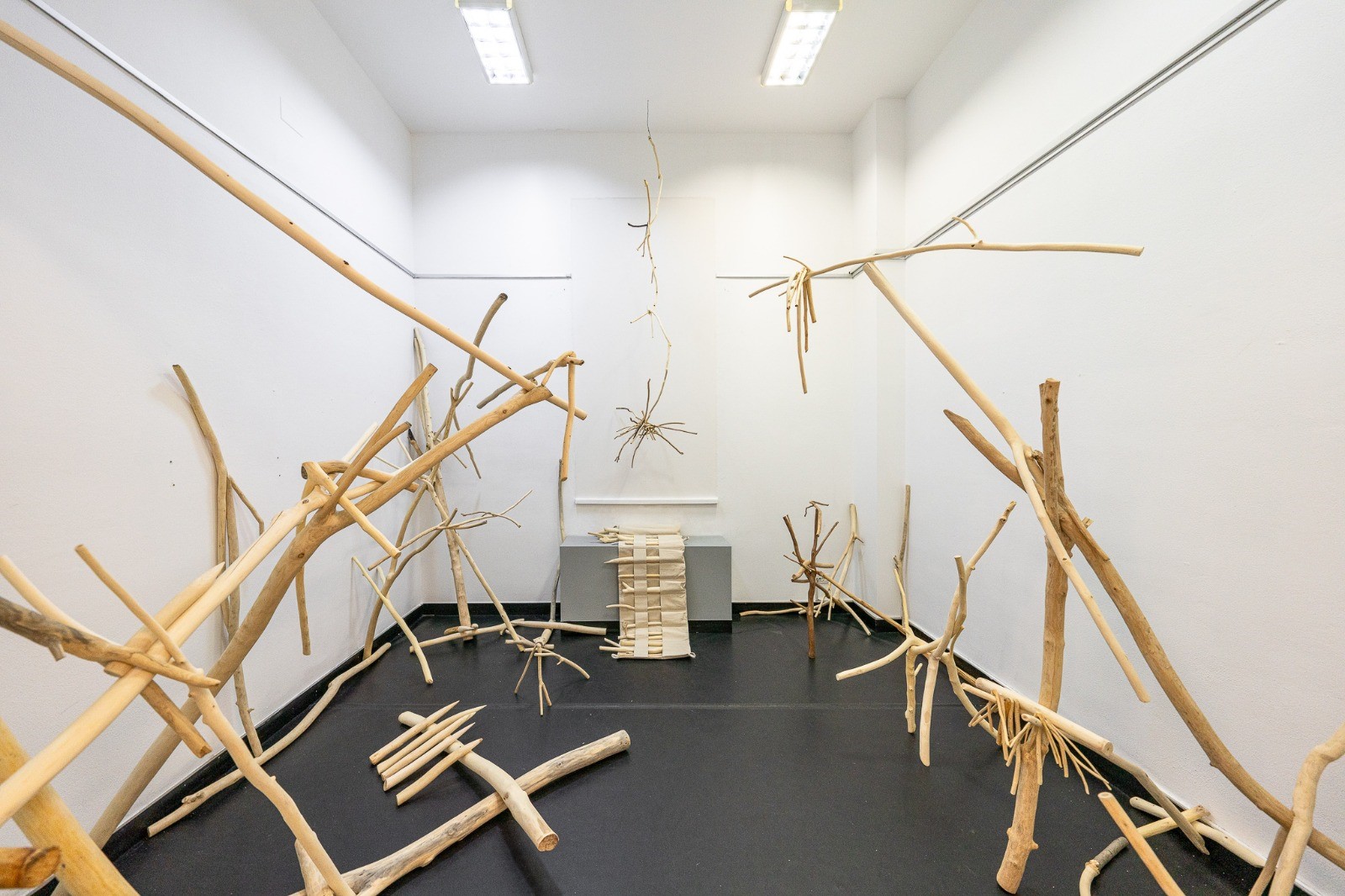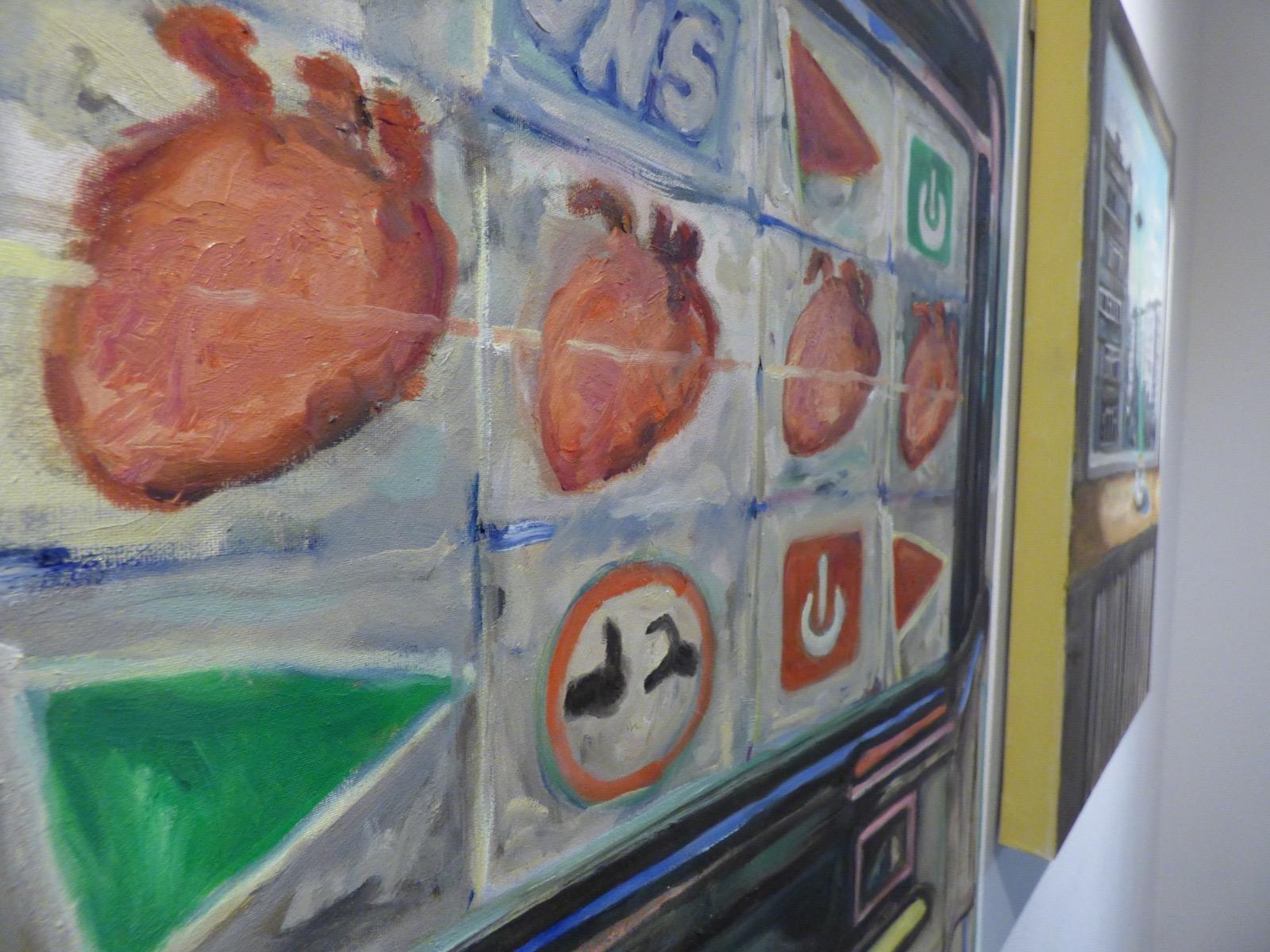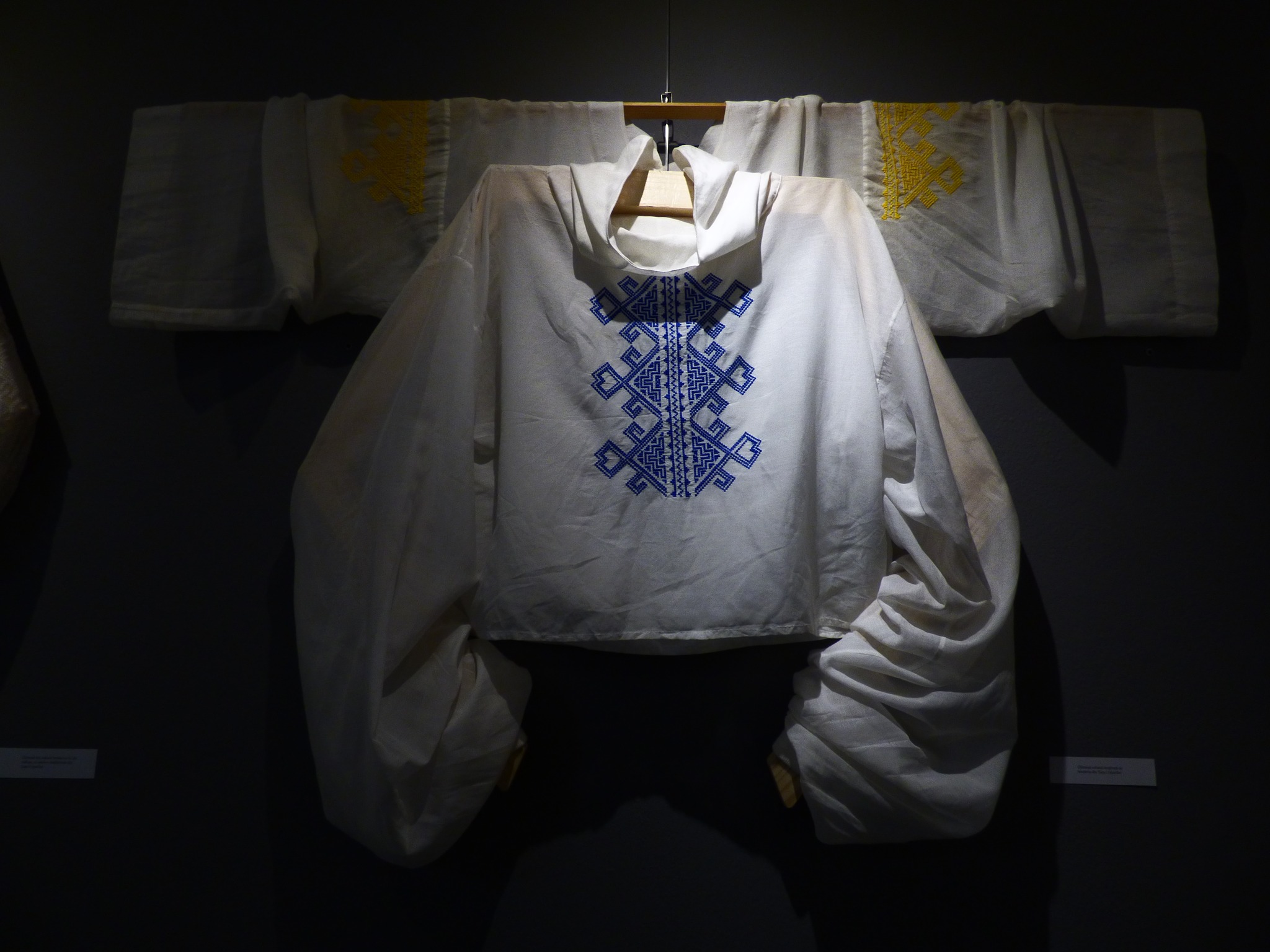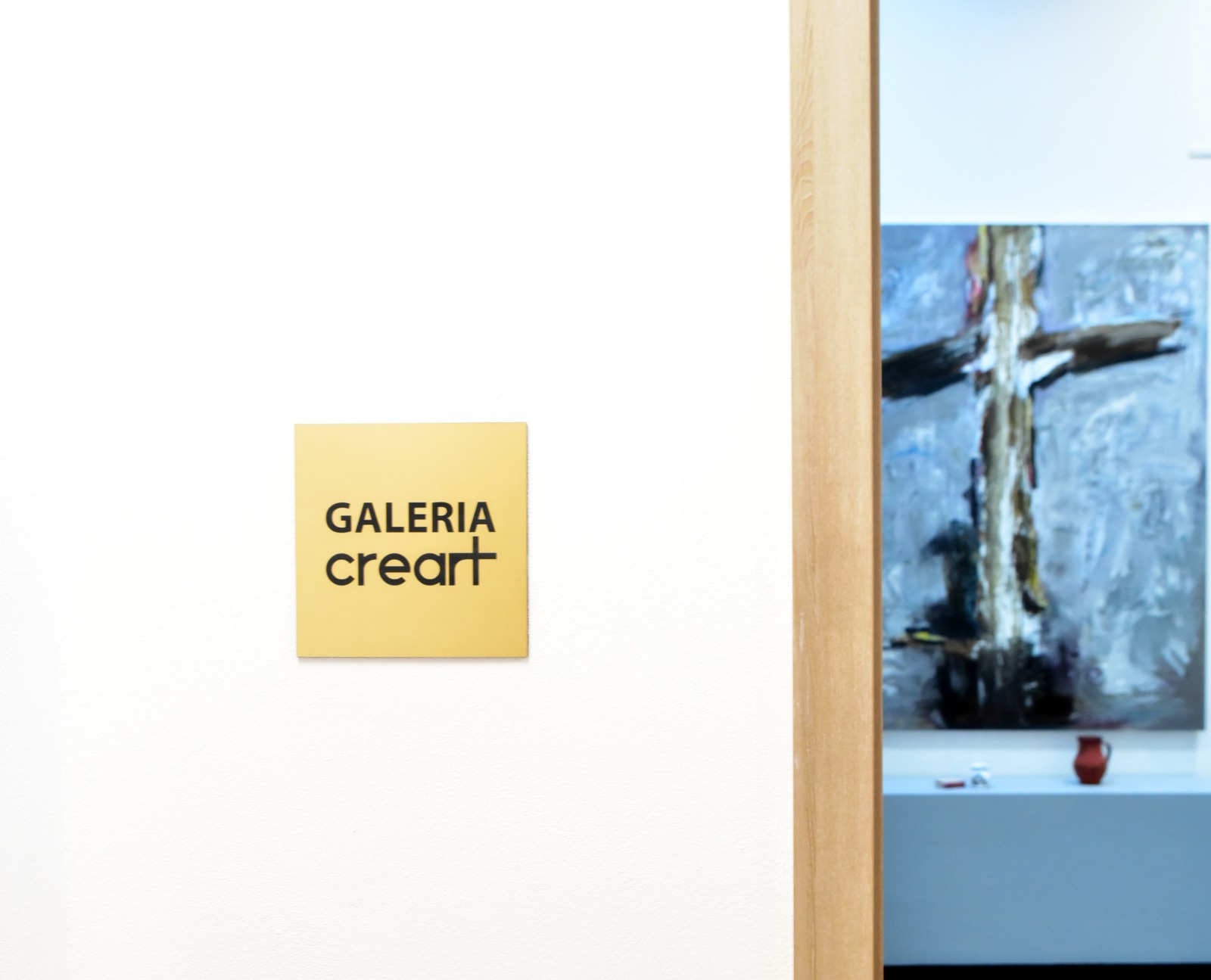“Through these works, I propose a reflection on an essential question: can we press a command for salvation? ‘CTRL+S(oul)’ explores the tension between technology and spirituality, between the mechanical reflex to save a file and the deep need to save the soul. We live in a world where our actions are becoming increasingly fast, automatic, almost unconscious. But salvation, in a spiritual sense, does not come by a shortcut. It requires faith, sacrifice and surrender. ‘CTRL+S(oul)’ is a visual message about faith at a time when we are used to instant interfaces and solutions – a modern code for an ancient quest.” – Sabina Legănaru
“Conceptual right from its title, Sabina Legănaru’s solo exhibition opening in the Holy Week is an exhibition dedicated to the Easter celebrations, a fusion between contemporary vision and sacred tradition and, last but not least, an incursion into her artistic practice, which has developed in two seemingly divergent directions – abstract painting and Orthodox iconography. The latter, Orthodox iconography, into whose mysteries and techniques Sabina Legănaru was initiated since high school, is only subtly present in this selection, namely through a small detail – the folds of the Christic vestment. Through ‘CTRL+S(oul)’ we are invited, in an increasingly polarised context on every subject, especially the most pressing ones (the evolution of AI, global warming, political leaders, the socio-economic situation), to save, in order to be able to access in the furure, from memory (whether internal or collective), fragments of enlightenment ” – Ana Daniela Sultana
Sabina Legănaru (b. 1982, Horezu) is a visual artist who graduated from the Faculty of Mathematics of the University of Bucharest and UNArte, with a BA and an MA in painting, member of the of the Romanian Artists Association. Her exhibitional activity includes shows of painting, drawing, photography and installation in Bucharest, Paris, Rome, Florence, London, Amsterdam, Montreux, Nice, Frankfurt, New York, Rome, Florence, London, Amsterdam, Montreux, Nice, Frankfurt and New York. Her participation in the Salon de la Peinture in Paris and the Florence Art Biennale are significant moments in his artistic career. She studied for 2 years in Florence and Rome and now lives and creates in Bucharest.
Ana Daniela Sultana is a curator and columnist, who graduated from the University of Applied Arts in Vienna. Her articles appear in ARTA magazine, Romanian-Italian Cultural Horizons and on agentiadecarte.ro. She collaborates with institutions such as The International Cultural Centre in Krakow, The Romanian Cultural Institute in Istanbul, The Romanian Cultural Institute in Vienna, The Romanian Cultural Institute in Venice, The Austrian Cultural Forum in Bucharest, The Museum of Bucharest, The Literature Museum in Bucharest, The Art Museum of Timișoara, Kunsthalle Feldbach, Aluniș Art Center and with various contemporary art galleries.
Photo credit: Cătălina Flămânzeanu

